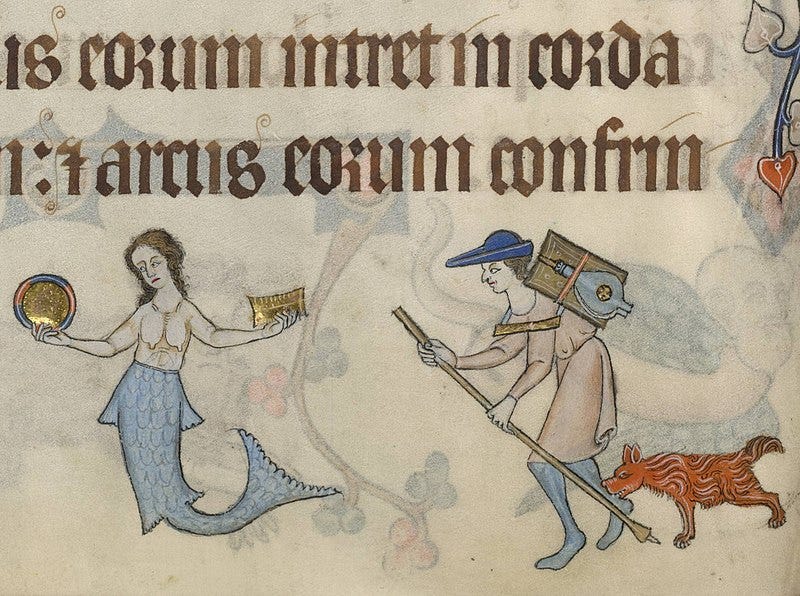I love to talk and think about the ways in which we are the same as a medieval person, and the ways we might differ.
Today is a big old ‘they’re just like us!’ newsletter, because Edward I and I have a lot in comb-on. (Common? I’ll show myself out).
Edward I (1239-1307) had a little trip to Paris in 1278. Apparently, Paris was theeee place to buy ivory combs in the thirteenth century. In fact, this reputation was so established, and therefore exploited, that by the early fourteenth century, laws were put in place forbidding bone combs to be produced in imitation of ivory ones. One thing I’ll always get a massive kick out of is learning about medieval fake fashions.
Anyway, if you wanted the best of the best in terms of combs, you’d go to Paris.
And if you were the literal King of England, you’d obviously spend crazy money on said combs. Like, over a grand. On two.
Again, so relatable. Not that I’m spending that kind of money on anything, but if there is one thing I will do, it’s get carried away with the holiday shoppies.
The actual price of the combs were 32s 6d. To compare, four boxwood combs in a haberdashers shop in London in 1378 cost 4d, and a silver comb in the St Paul’s 1245 inventory was valued at 9s. (Museum of London catalogue: dress accessories. p. 376)
If we pop these figures into the National Archives currency converter, the total cost of these combs in 2017 would have been £1,127.87. And then if we whack that into the Bank of England’s currency converter, the rough cost today would be £1,460.52. What a bargain!
Interestingly, years later Edward I’s son Edward II was robbed, and among the list of priceless items he was sad to miss was a comb and silver enamelled mirror. This comb and mirror had been given to the king (Edward I) by his daughter and Edward II’s sister, the countess of Bar at Ghent (who had died in 1298). Is Edward I the comb king of my dreams? Very possibly.

Comb and mirror sets were common combinations, especially for gifts. While there are some lovely later surviving ones that you can peruse in the V&A museum, we also have earlier evidence that they were often sent as a pair.
Ethelburga, Queen of Northumbria received a comb and mirror set from Pope Boniface in 625, as he was telling her to hurry up and convert her husband. And then in Scotland, some of the Pictish engravings involve comb and mirrors, like you can see in this super-blurry close up.

Combs also appear on their own on these stones and not exclusively with mirrors, which is its own interesting thing. Was a comb and mirror a symbol that indicated the gender of the person associated with a particular standing stone, and did a comb by itself suggested a different gender? Were they even associated with people in the first place? Were they grave markers, or something else entirely? Who knows!
Genuinely, we do not know. I went to a talk on the Picts by someone who very wisely said that if you wanted to study them, you needed to be at peace with losing your mind. There is so little evidence (thanks, acid soil), that we will likely never have a clear picture.
I <3 history!
Other!
More lipstick stuff: the Revlon lipstick in Rum Raisin is the perfect autumn shade, and they have a new super glassy/glossy formula that I am really into at the moment.
Also, the Nyx butter glosses, which are some of my favourite lip glosses of all time, now come in glitter shades.
Finally on the lipstick front, I wore the Maybelline superstay matte ink liquid lip to The Era’s Tour to maintain my ‘red lip classic thing that you like’ all evening and it worked perfectly. I did not have to touch up, I ate and drank and sang AND cried, over the course of like seven hours, and I ended the night as intact as I had started it. Witchcraft. Anyway. I definitely didn’t purchase three lip products this week like a certain medieval king with a penchant for combs.



